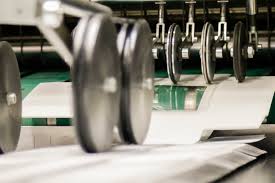EU Exports of Machinery: Still Modest Rebound in Q3-2020
Penalized by the climate of international uncertainty, European sales of machinery and industrial plants are struggling to restart
Published by Marcello Antonioni. .
Export Industrial equipment Uncertainty Check performance Conjuncture Great Lockdown Global economic trendsIn the third quarter of the year, European exports of Machinery and Industrial Plants show a less penalizing trend than the previous quarter, which had recorded a YoY decrease of 21. 5% in euro, strongly influenced by the lockdown measures widespread at international level. In spite of this improvement, exports are still in negative territory in Q3, recording a 8.3% contraction in euro, year-over-year.
In the first three quarters of the year, European sales in the sector cumulatively recorded a 11.7% fall in euro, with a reduction close to €9.3 billion compared to 2019.
In the period January-September, metal processing machines and textile machines were the most penalized,
with cumulative decreases greater than 20%
Within the sector, EU sales of metal processing machines1 and textile machines2 recorded the sharpest contractions in cumulative terms, respectively falling by 24.3% YoY (corresponding to a reduction of €879 million compared to 2019) and 21.7% YoY (corresponding to a loss of more than €1.1 bill
ion compared to the same period last year).
Even the most recent quarter confirmed the negative trend of the two sectors: in particular, in Q3 EU exports of metal processing machines showed a YoY decrease of 14.6%, while textile machines fell by 12.3%.
Falls between 15 and 20% for extrusion machines, machines for hard materials and machines for printing and publishing
Significantly negative trends also characterize the European sales of machines for printing and publishing3 (-18.3% in euro compared to the first 9 months of 2019), machines for hard materials4 (-16.9%) and extrusion machines5 (-15.1%).
In the most recent period we can, however, spot some signs of recovery for EU exports of extrusion machines (-3.7% YoY), printing and publishing machines (-4.3%) and machines for hard materials (-4.7%).
Relatively lower decreases (with cumulative drops lower than 10%) for machine tools for metals, machines for paper mills, machines for packaging and machines for food
Relatively stable results for European sales of:
- Machine tools for metals6 (-7.5% YoY in the first 9 months of the year, corresponding to a decrease of €1.4 billion)
- Machines for paper mills7 (-8.1%)
- Automatic packaging and wrapping machines8 (-8.4%)
- Food machines9 (-8.9%)
In the period July-September EU exports of some kinds of machinery returned to positive territory, albeit with modest growth. Machines for paper mills record a 1.4% growth in euro YoY, while machine tools for metals slightly grew by 0.5%; in the period considered, we can also confirm an improvement of the average dynamics shown by exports of food machines (-3.2%) and automatic machines (-3.7%).
Conclusions
The conditions of particular uncertainty of the global economic context, combined with less favorable prospects of recovery of the international economic cycle (see recent articles "International Trade Outlook: Uncertainty and Growing Chinese Threat" and "October 2020 IMF Scenario: the Long Road to Recovery") are conditioning the recovery of the demand for investment in machinery and equipment addressed to European companies.
In a picture that presents widespread declines for EU exports in the sector, we can point out some compartments that appear relatively sheltered from the negative the external environment (i.e. food chain, paper and packaging) and that in recent months have also experienced positive trends. Nonetheless, this growth has been moderate and not yet able to bring about a recovery of what was lost in the first part of the year.
1) See the list of products considered in the related description.
2) See the list of products considered in the related description.
3) See the list of products considered in the related description.
4) See the list of products considered in the related description.
5) See the list of products considered in the related description.
6) See the list of products considered in the related description.
7) See the list of products considered in the related description.
8) See the list of products considered in the related description.
8) See the list of products considered in the related description.


